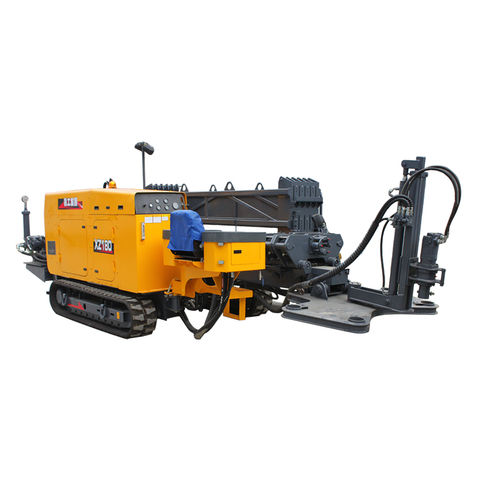Directional borehole drilling has transformed the landscape of subsurface investigation and installation, marking a major advancement in boring technology. Unlike straight drilling, which operates on a direct route, directional drilling allows operators to move around hurdles, access challenging areas, and enhance resource harvesting. This innovative approach is not only offering solutions for the oil and gas sector but is also making headlines in utility infrastructure, pipeline construction, and renewable energy projects.
Grasping the techniques behind directional borehole drilling becomes essential for those interested in the industry, whether they are industry veterans or curious newcomers. From its early milestones to the latest advancements driven by intelligent systems and robotics, this article examines the basic concepts of directional drilling techniques, the benefits it provides, and its increasing importance in today's infrastructure. As we investigate the different types of this technology and the complexities of the technique, we will also highlight practical instances that show the revolutionary effects of these techniques in various settings.
Grasping Angled Boring
Directional boring is a unique technique used in the boring industry that allows for the development of wells that are not strictly vertical. This technique is essential for accessing resources that are located far from the upright drilling shaft, enabling more optimal extraction of oil, gas, and other resources. By employing advanced technology, horizontal drilling can traverse around obstacles or through diverse geological structures, making it a flexible option for many projects.
The process of angled drilling involves several stages, including planning the path of the borehole, selecting the suitable tools and equipment, and overseeing the drilling process. A cutting bit is utilized to break through the earth at specific angles, permitting operators to steer the bore path according to the geological attributes and the target resource site. The exact control achieved through this method helps to minimize the environmental impact and land disturbance often associated with traditional vertical boring.
In recent years, angled drilling has advanced considerably with the incorporation of new solutions such as locating systems and advanced boring fluids. These advancements improve the precision and productivity of boring operations, enabling companies to tackle complex tasks with greater assurance. As demand for power and infrastructure projects keeps to rise, comprehending the mechanics of directional boring grows progressively crucial for sector experts and participants.
Advantages and Advantages
Directional drilling offers substantial advantages compared to conventional vertical drilling methods, especially in metropolitan and fragile environments. One of the primary benefits is the ability to reduce surface disruption. As directional drilling enables operators to access targets beneath obstacles, there is less need for extensive land clearing, which helps preserve current infrastructure and maintain the surrounding environment. This is particularly crucial in densely populated areas where maintaining the stability of roads, buildings, and parks is vital.
Another major benefit is the effectiveness and cost-effectiveness of directional drilling methods. By enabling Directional Drilling Northern Ireland and reaching various targets from a single entry point, directional drilling decreases the amount of drilling necessary. This not only saves time but also reduces overall project costs. In addition, directional drilling frequently leads to faster project completion relative to traditional methods, allowing companies to meet deadlines and reduce downtime.
The environmental advantages of directional drilling are also significant. Methods used in directional drilling are designed to reduce the impact on the landscape and to safeguard water sources. By minimizing the interference to the surface, directional drilling helps preserve the ecological balance of an area. Additionally, the precision and control offered through modern directional drilling technology greatly decrease the chances associated with spills or accidents, further enhancing its appeal as a green option in construction and utility installation.
Future Developments in Horizontal Borehole Engineering
The future of directional drilling is poised for significant advancements driven by innovations in tech. As drilling techniques continue to progress, we can expect increased implementation of artificial intelligence and machine learning, which will improve the precision and effectiveness of drilling operations. These tools enable immediate data analysis, allowing drillers to modify parameters instantaneously and resolve issues before they escalate, thus improving overall project outcomes.

Another significant development is the increasing use of cutting-edge software and sensor technologies to enhance the planning and execution of directional drilling projects. This includes sophisticated modeling tools that model drill paths and optimize borehole designs, as well as improved bore tracking systems that provide real-time feedback on the drill's position. Vacuum Excavation Ireland facilitate enhanced accuracy but also minimize risks associated with complex urban environments and sensitive ecological areas.
Sustainability is becoming an essential focus in the directional drilling sector, pushing for practices that reduce environmental impact. Advancements aimed at creating eco-friendly drilling methods and materials are on the rise. As public and governmental pressure for sustainable practices increases, the industry is likely to see more firms adopting green technologies that align with efforts to support sustainable infrastructure, making directional drilling a vital component of upcoming projects in energy, utilities, and urban planning.
